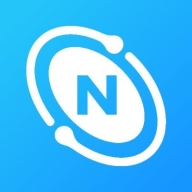

MongoDB Atlas and NebulaGraph are competing solutions in the database management sphere. MongoDB Atlas seems to have the upper hand due to broader adoption and robust support, whereas NebulaGraph distinguishes itself with specific graph database capabilities.
Features: MongoDB Atlas offers flexible schema design, horizontal scaling, and global database deployment, making it suitable for diverse workloads. NebulaGraph is focused on processing complex graph data, providing high-performance traversal operations and native support for mixed data sets.
Ease of Deployment and Customer Service: MongoDB Atlas facilitates deployment with its managed cloud service model, known for integration ease and scalable operations. It also has a reputation for responsive and deep customer support. NebulaGraph offers containerized deployment options and emphasizes technical documentation along with robust community support, tailored more to graph-specific requirements.
Pricing and ROI: MongoDB Atlas generally involves a higher initial setup cost attributed to its cloud-managed model, but offers a positive return on investment due to scalability and lower operational costs. NebulaGraph provides a cost-efficient alternative with lower initial expenses, advantageous for scenarios involving graph data processing where budget is a key factor.

MongoDB Atlas stands out with its schemaless architecture, scalability, and user-friendly design. It simplifies data management with automatic scaling and seamless integration, providing dynamic solutions for diverse industries.
MongoDB Atlas offers a cloud-based platform valued for its seamless integration capabilities and high-performance data visualization. It features advanced security options such as encryption and role-based access control alongside flexible data storage and efficient indexing. Users benefit from its robust API support and the ability to manage the platform without an extensive setup process. Feedback suggests improvements are needed in usability, query performance, security options, and third-party tool compatibility. While pricing and support services could be more economical, there is a demand for enhanced real-time monitoring and comprehensive dashboards, as well as advanced containerization and scalability options supporting complex database structures.
What are the key features of MongoDB Atlas?
What benefits should you consider in a solution like MongoDB Atlas?
In healthcare and finance, MongoDB Atlas manages payment transactions and facilitates real-time analytics, powering SaaS solutions and storing large volumes of user data. It enhances scalability, performance, and security for cloud hosting, IoT integrations, and Node.js environments, widely favored for its flexibility and capability to support microservices.
Take NebulaGraph Database wherever you want, on-premises, public cloud, hybrid deployment, or even on macOS/Windows. Plus, with easy-to-use browser-based visualization toolkits, you can take graph technology to the next level. NebulaGraph's powerful native graph engine enables lightning-fast QPS and TPS with millisecond latency. With high concurrency, efficient graph traversals, and optimized memory usage, you can process sheer volumes of graph data blazingly fast. NebulaGraph simplifies data queries with nGQL, a query language that is easy to learn and use, efficiently transforming complex SQL queries into brief graph queries. And with compatibility for openCypher and ISO-GQL, you can cut down learning and migration costs while maximizing efficiency.
We monitor all Database as a Service (DBaaS) reviews to prevent fraudulent reviews and keep review quality high. We do not post reviews by company employees or direct competitors. We validate each review for authenticity via cross-reference with LinkedIn, and personal follow-up with the reviewer when necessary.